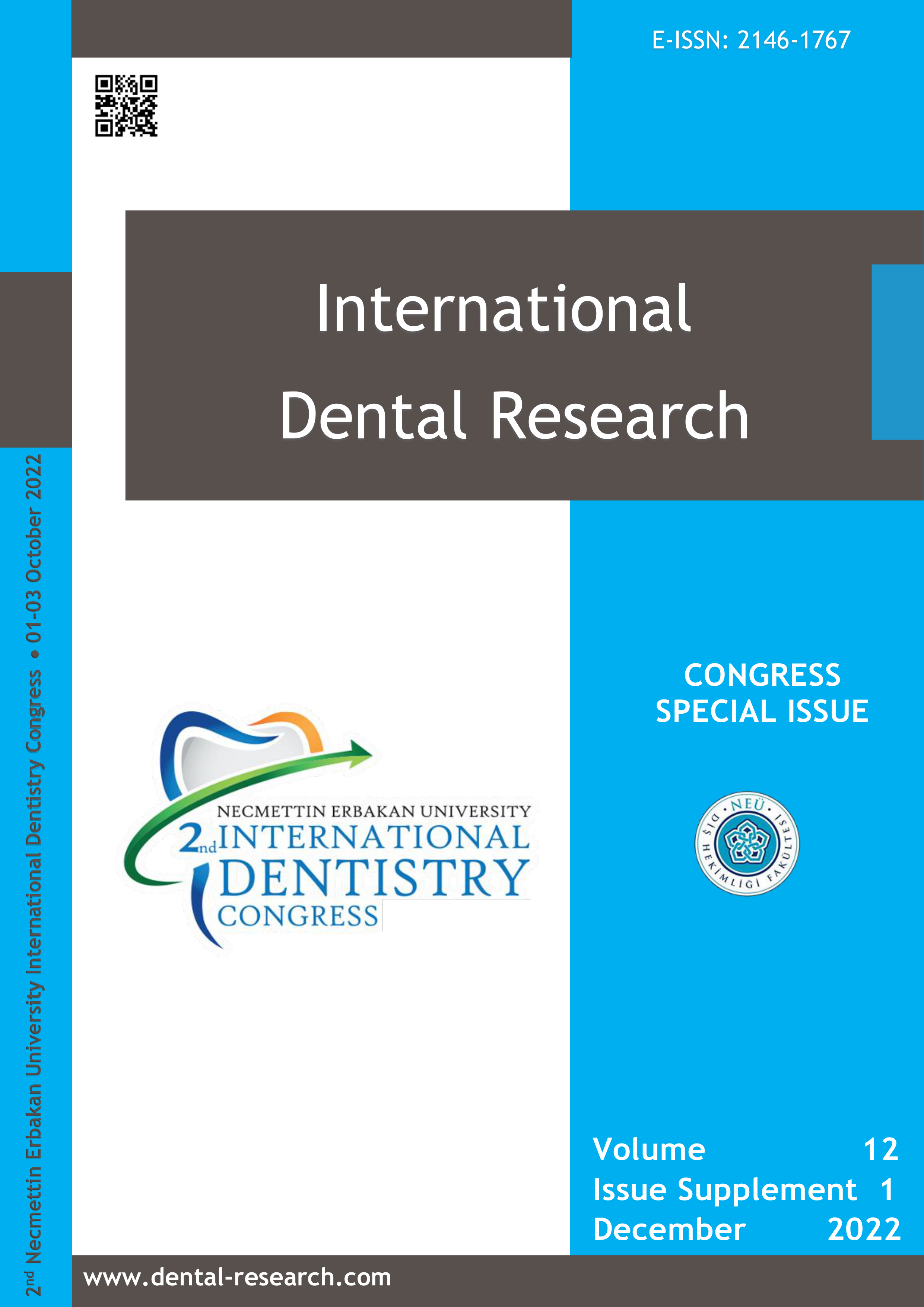The effect of different herbal teas on the color stability of nanohybrid and bulk-fill composites
Abstract
Aim: The aim of this study is to investigate the effects of green tea and rosehip tea, on the color stability of nanohybrid and bulk-fill composite resins.
Methodology: A total of 60 disc-shaped samples were made from two types of A2 resin with nanohybrid (Tetric N Ceram, Ivoclar Vivadent, Schaan, Liechtenstein) and bulk-fill (Filtek Bulk-Fill, 3M ESPE, MN, USA) structure with the help of 10 mm diameter and 2 mm thick Teflon molds in this study. All samples were finished and polished with 4-stage (thick, medium, fine, superfine) polishing discs (Sof-lex, 3M ESPE, MN, USA) and kept in an oven at 37 °C for 24 hours. The samples, whose initial color measurements were made by spectrophotometer, were divided into subgroups for the control group and two different herbal teas (Green tea, Rosehip) (n=10). Color measurements were repeated, and ΔE values were calculated. Wilcoxon, Kruskal-Wallis, and Bonferroni tests were used to analyze the data (p < 0.05).
Results: There was no statistically significant difference in color change between the composite resins (p > 0.05). No significant color change was found for either the Tetric N-Ceram or Filtek Bulk-Fill composite resin samples immersed in distilled water (p > 0.05, ΔE<3.3).
Conclusion: Rosehip and green tea affect the color stability of composite resin restorations. Whereas the color change caused by green tea is at a clinically acceptable level, that stemming from rosehip tea falls within clinically unacceptable levels.
How to cite this article:
Tunçdemir MT, Dereli Z, Bahar A. The effect of different herbal teas on the color stability of nanohybrid and bulk-fill composites. Int Dent Res 2022;12(Suppl.1):103-7. https://doi.org/10.5577/intdentres.445
Linguistic Revision: The English in this manuscript has been checked by at least two professional editors, both native speakers of English.
Full text article
Authors
Copyright © 2022 International Dental Research

This work is licensed under a Creative Commons Attribution-NonCommercial-NoDerivatives 4.0 International License.
This is an Open Access article distributed under the terms of the Creative Commons Attribution 4.0 International License (CC BY 4.0), which permits unrestricted use, distribution, and reproduction in any medium, provided the original work is properly cited.

